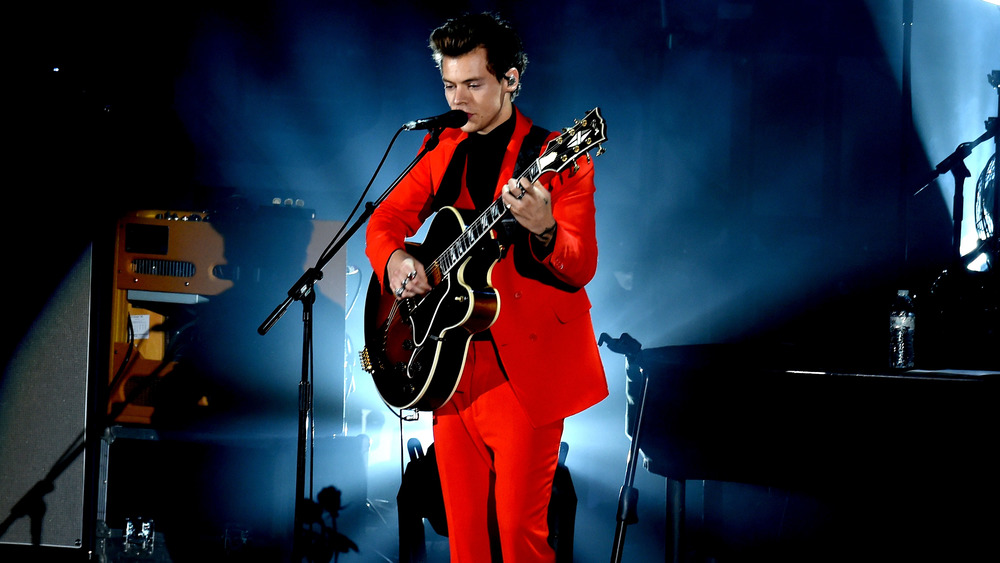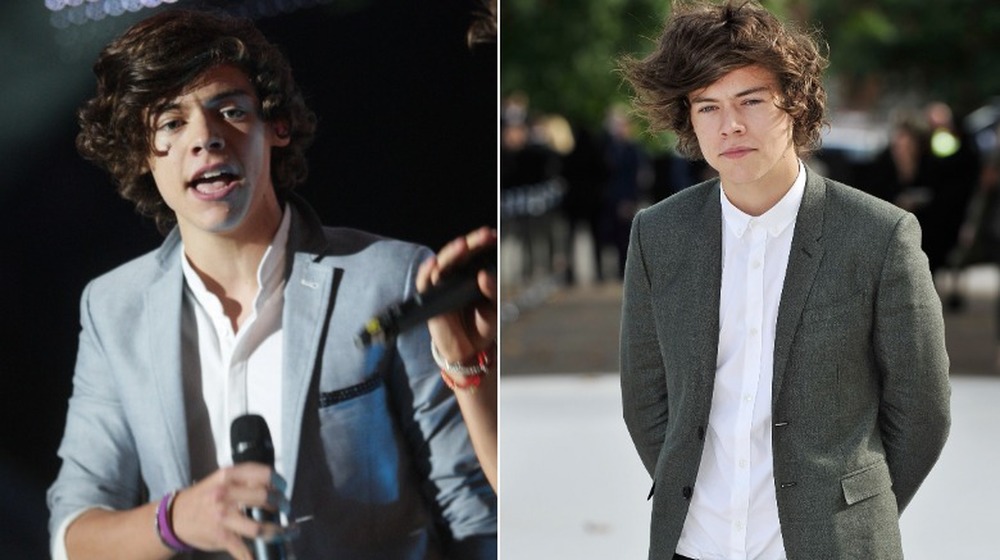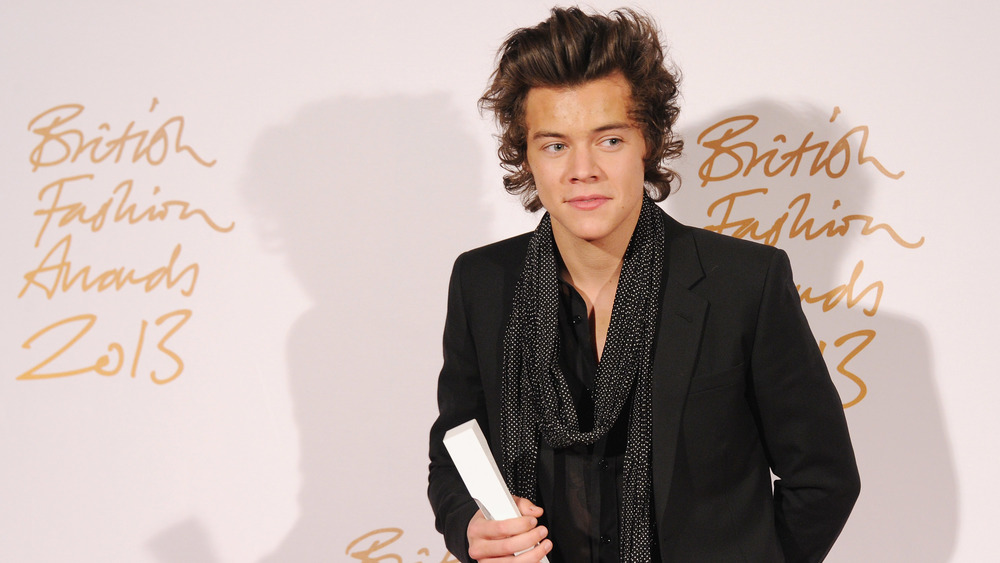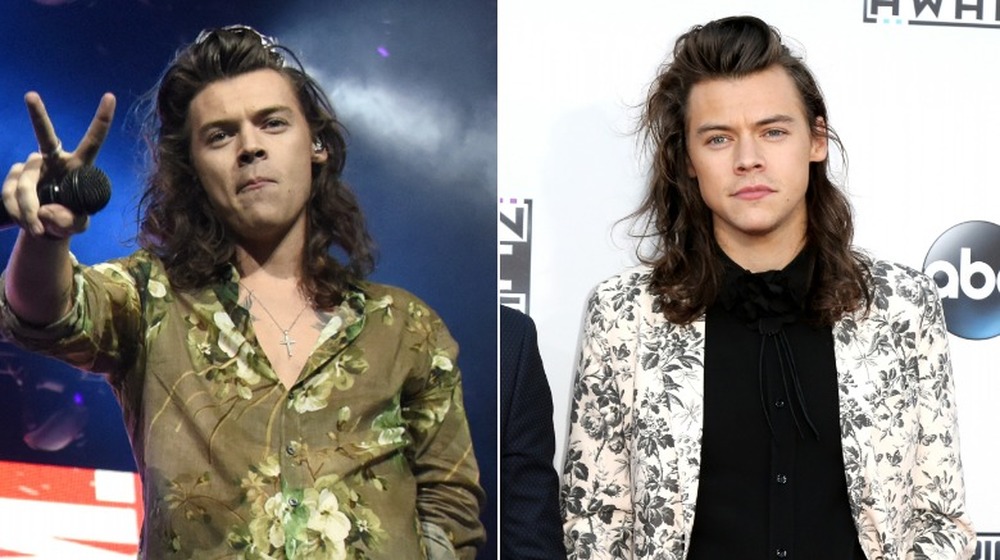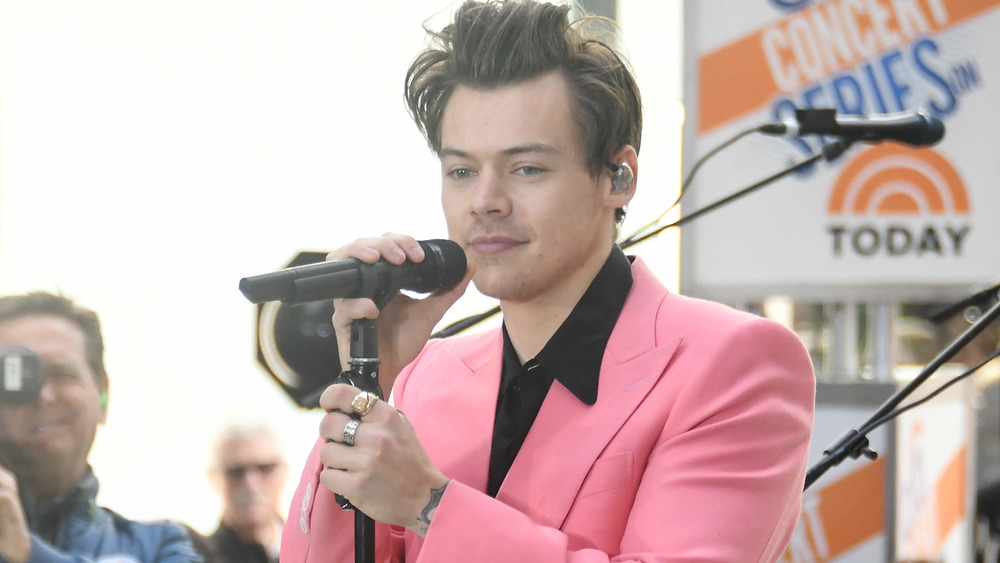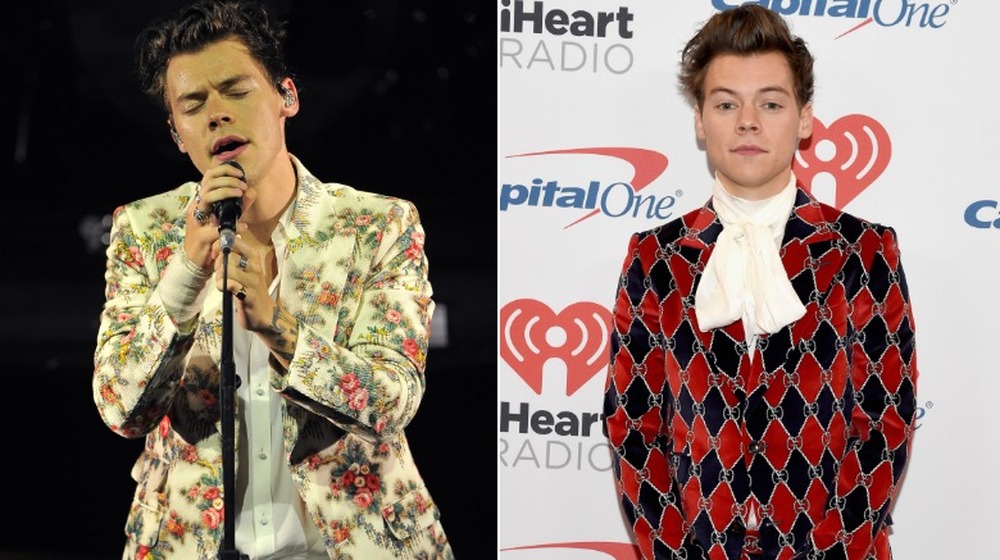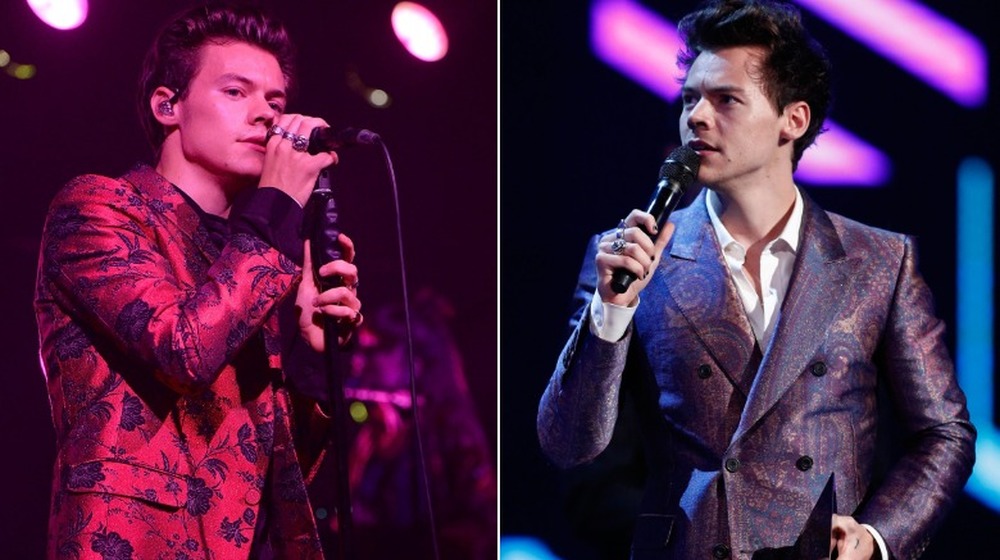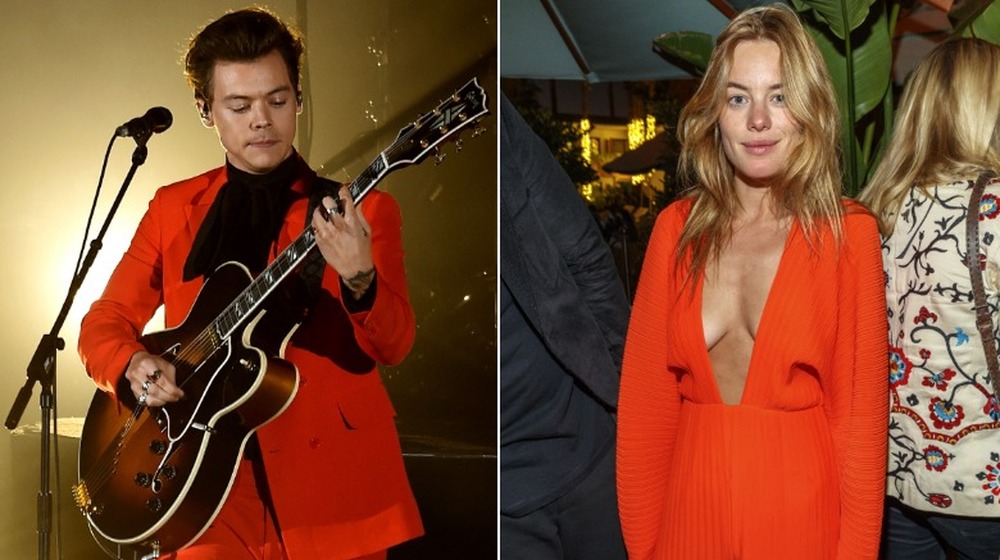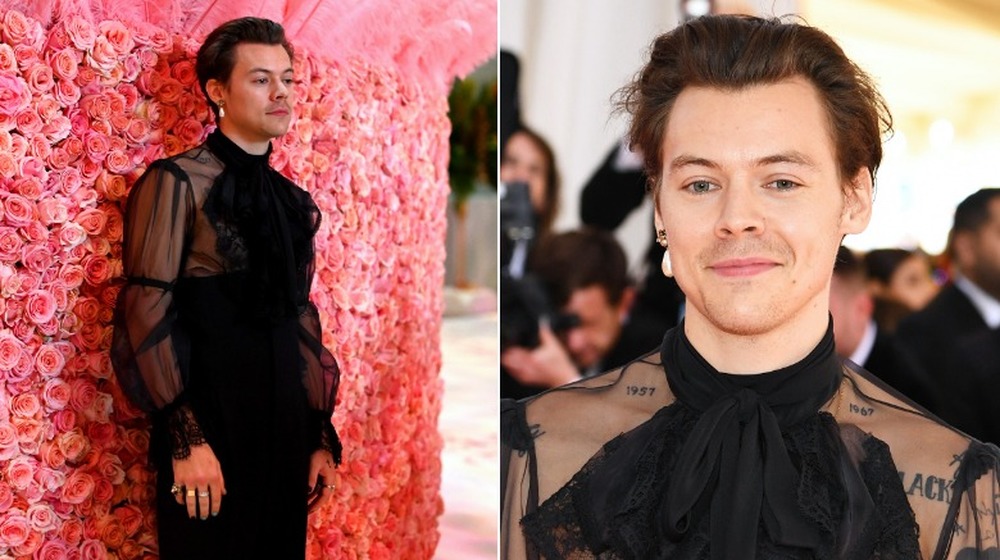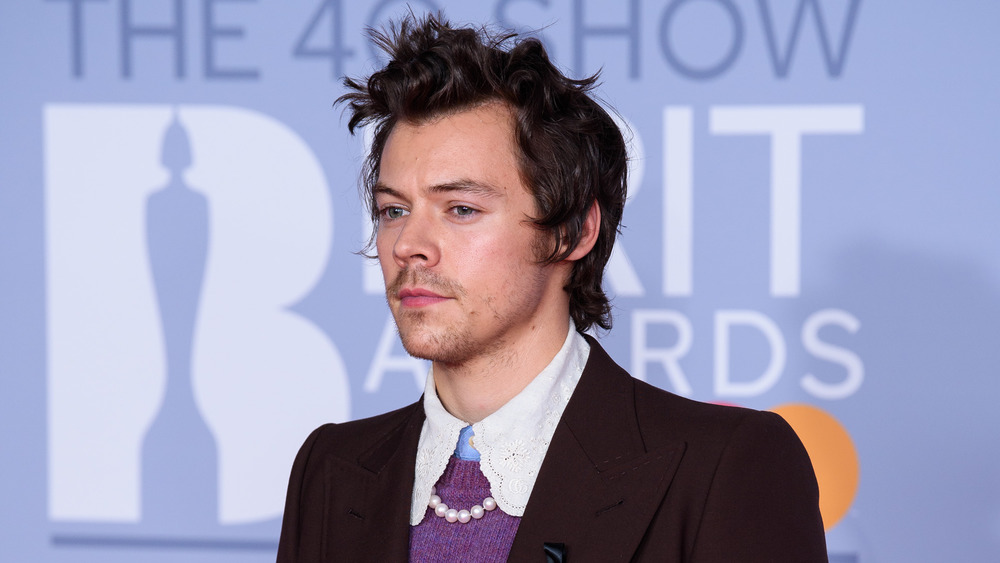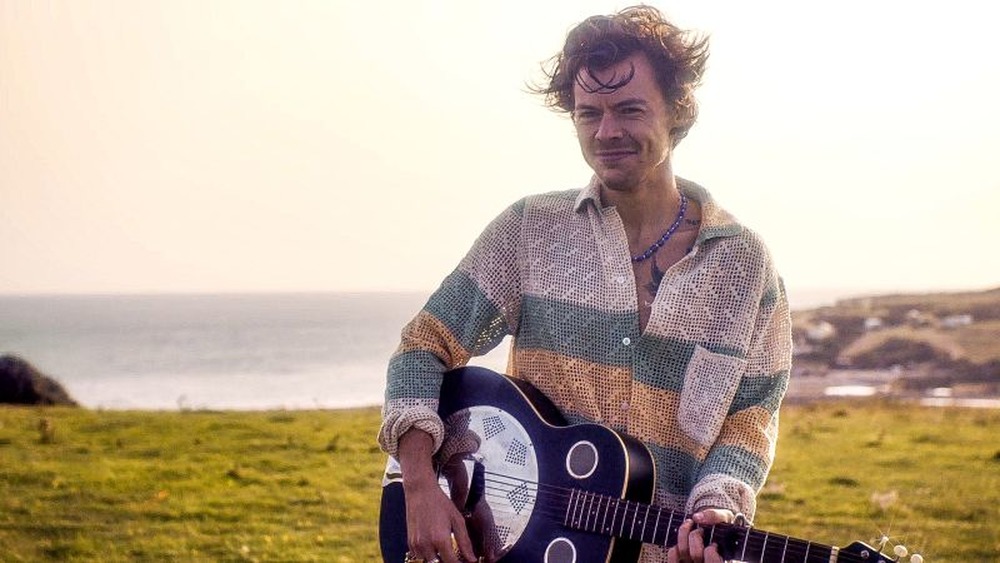Harry Styles' Fashion Evolution Through The Years
Harry Styles wears his heart on his pink, ruffled sleeve. At the start of his career, he wore it on his gray, tailored sleeve. But in both cases—and all the sleeves in between—the Styles icon (sorry) has expressed his personal, professional, and even political leanings through the art of fashion. Like his professional identity, the former One Direction member-turned-multi-hyphenate pop culture icon's look is continuously shape-shifting. His stylistic choices have often reflected the chameleonic aspects of his life: his current sonic influences, his lover du jour, his evolving approach to gender and sexuality.
Styles is a professional leading man, but his current fashion identity is the result of the singer's collaborations with his stylist, Harry Lambert; gender-flouting designers like Harris Reed; and Gucci creative director Alessandro Michele. Styles himself does not underestimate the value and power of his wardrobe: Reed told The Independent that the singer keeps his clothes in a secret archive "somewhere in London" with round-the-clock surveillance. From preppy and boyish to artful and norm-shattering, following Styles' fashion evolution reveals an evolution in what it means to be a boy band member, a contemporary sex symbol, and a "manly man."
If One Direction were the Spice Girls, Harry Styles would've been Preppy Spice
On September 19, 2010, a then-16-year-old Harry Styles wore a gray cardigan, a green skinny scarf, and stacks of bracelets to audition for the British talent show The X Factor. Throughout his time on the competition show, Styles wore unremarkable, neutral looks onstage, and casual sweats and sneakers offstage. One Direction was styled as a fresh take on the boy band, forgoing matchy-matchy uniforms in favor of looks that distinguished each band member from the others without clashing in color. In the band's early days, Styles' trademark look revolved around structured blazers and khaki pants and was, as bandmate Zayn Malik said in Teen Vogue, "quite preppy." As Glamour noted back in 2012, the guys of 1D wore "Jack Wills, that collegiate-y brand from the UK."
Then, in September 2012, Styles signaled his emerging allegiance to high fashion when he sat in the front row of Burberry's London Fashion Week show (allegedly to support his rumored then-girlfriend, model Cara Delevingne). Backstage, Styles spoke with On Demand Entertainment about what he liked about the classic British fashion house: "The clothes are... nice and subtle," he said. "The colors aren't, like, too much... It's easy to wear."
Harry Styles' look got more rock 'n' roll
When One Direction's sound got a little more rock 'n' roll with 2013's Midnight Memories, Harry Styles' look followed suit. He went through a phase of keeping his curls in place with Keith Richards-esque hats and headscarves, and cast aside his previous buttoned-up look for unbuttoned, grunge-y shirts that revealed his growing collection of sailor-inspired chest tattoos. The singer also began opting for edgier fashion houses, including Saint Laurent—which was led by rock band outfitter Hedi Slimane at the time—and Alexander McQueen.
The Midnight Memories era also ushered in a darkening of Styles' color palette as he developed a uniform of black skinny jeans and beaten-up leather Chelsea boots. In the 2017 documentary Harry Styles at the BBC (via Teen Vogue), Styles revealed that his devotion to the heeled boot began after he was mobbed by Parisian fans who stole his sneakers. But according to a 2019 profile in The Guardian, Styles' experimentation with the footwear began years earlier, pre-fame: His childhood friends greeted him with bewilderment when "little Harry had the gumption to show up in the playground wearing Chelsea boots instead of the approved chunky trainers."
Styles' stylistic shift from pop boy to rock star didn't go unnoticed: He beat out the likes of David Beckham and Kate Middleton to win the 2013 British Style Icon Award at the British Fashion Awards.
The Harry Styles award show look that was a 'turning point'
When asked what he looked for in a lady in a November 2014 interview with On Demand Entertainment, Styles said that femaleness was "not that important." The comment may have been said in jest, but it unofficially marked the beginning of Styles' increasing openness about gender and sexuality. It was around this time that Styles began incorporating subtle feminine elements into his looks, such as cheetah-print Saint Laurent jackets, ruffled shirts, and floral prints.
After One Direction announced their plans to take a break in August 2015, Styles began to work more closely with the stylist Harry Lambert. According to GQ, Styles appeared to be Lambert's "sole celebrity client" at the time (although the stylist now works with The Crown's Emma Corrin). In a 2019 interview with British Vogue, Lambert called the white floral Gucci suit Styles wore to the 2015 American Music Awards "the turning point" for the singer's style journey. "It was very exciting to see everyone's responses, but also how great he looked in it," he said. "At the time it was a very bold move to make."
The look was a glimpse of things to come: the genesis of Styles' current Gucci-centric aesthetic and the close partnership between Lambert and Styles.
After One Direction, Harry Styles became an 'artthrob'
"Heartthrobs are getting weirder—and that's exciting," Anne Donahue wrote in a 2016 The Guardian essay, in reference to Harry Styles. Following the breakup of One Direction, one of Styles' first moves, other than working on his folky Britpop solo debut album, was landing a role in Christopher Nolan's World War II blockbuster Dunkirk. He cut off his trademark long curls for the role, trading them for a pseudo-bowl cut that sent fans into a social media frenzy.
From a public perspective, 2016 was a relatively quiet year for Styles. But when it came time for the singer to make his first press appearance as a solo star, he hand-picked the alternative magazine Another Man as the outlet. He appeared in the magazine's Fall/Winter 2016 issue wearing choker necklaces, a toy-soldier jacket, and a floral suit. "[Harry] was always interested in clothes and spent all of his birthday money and wages on getting the train into Manchester to expand his wardrobe," Gemma Styles, his sister, wrote in the accompanying article.
Donahue penned her essay for The Guardian in response to the Another Man editorial. "And we also notice that out of every magazine, he's opted for a niche publication," she wrote, "telegraphing an allegiance to the niche worlds of art and fashion rather than aiming for mainstream notoriety." The essay was aptly titled, "Harry Styles proves the heartthrob is dead: long live the artthrob."
Harry Styles let his solo sound and individual style fly
With the release of Dunkirk and his first solo album, 2017 was a pivotal year in Harry Styles' professional and sartorial evolution. In the cover shoot for his album, he wore a blue velvet suit while soaking in a bath of millennial pink. He was featured in the May 2017 issue of Rolling Stone in a high-necked, lace-trimmed Victorian blouse that recalled Mick Jagger circa 1969, as well as a pink pussy-bow blouse under a floral brocade suit. In an NPR feature called "Styles of the Times," Ann Powers wrote that the Rolling Stone spread "officially signaled his coming of age."
"Styles dresses in the finery of rock's legacies: not just that t-shirt borrowed from grunge, but a Carnaby Street style black suit designed by the late post-punk fashion maverick Alexander McQueen and a punkish ripped-jeans-and-bandana look that makes him look like a youthful Mick Jones of the Clash," Powers wrote. "He also appears in a high-necked lace top that places him within the queer continuum of current trendsetters." In an interview with ET that November, Styles revealed that he drew most of his inspiration from a country singer, not a punk-rocker. "My music and fashion main influence was probably Shania Twain," he said.
The many suits of Harry Styles
Throughout 2017 and 2018, Harry Styles began favoring alternative London designers as much as high-fashion giants like Gucci. According to Vogue, Styles' stylist Harry Lambert connected the singer with the gender-fluid designer Harris Reed near the end of 2017. While creating looks for Styles, Reed drew inspiration from rock 'n' roll legends like David Bowie, Jimi Hendrix, and Mick Jagger. As Reed told Paper, they aimed to push the singer in "a glam rock direction."
"I'm a gender-fluid designer. This community is very important to me," Reed told GQ. "I really want to make a global change in how we look at acceptance and fluidity, and [Styles] really understood that."
At the beginning of 2018, Styles was featured in fourth place on GQ's annual best dressed men list. The singer's entry was accompanied by a quote from American designer Michael Kors, who called him "the modern embodiment of British rocker style: edgy, flamboyant, and worn with unapologetic swagger." On tour in 2018, Styles showcased his new music as much as his immaculate collection of suits. Cosmopolitan rounded up 36 of his gorgeous suits, a list that includes glittery Saint Laurent numbers, purple-and-orange colorblock creations by Calvin Klein, lush ensembles by Alexander McQueen, bespoke designs by Charles Jeffrey's East London club-kid label LOVERBOY, and, of course, copious Gucci florals. In June 2018, Styles appeared in his first Gucci campaign, marking the official beginning of a fashionable partnership with designer Alessandro Michele.
There's a piece of Camille Rowe in how Harry Styles dresses
"There's a piece of you in how I dress/Take it as a compliment," Harry Styles sings in "Cherry," the fifth track on his 2019 sophomore album Fine Line. The song features a voicemail recording of French-American model-slash-actor Camille Rowe, whom Styles dated from 2017 to 2018. Sartorially, the couple could have been Marianne Faithfull and Mick Jagger 2.0. While Rowe and Styles were together, they often shared clothes, including a striped cardigan that set fans' social media accounts ablaze. But even beyond their breakup, the model's flair left a lasting impact on the singer.
The pair reportedly began dating in the summer of 2017, and it was around that time that Styles began to wear brighter colors and more Bohemian, bell-bottomed getups. Elements of Rowe's playful, 1970s-inspired vintage style—which revolves around colorful prints and cheeky slogan t-shirts—have permeated Styles' outfits, music videos, and general aesthetic ever since the former lovebirds met. The music video for "Watermelon Sugar"—a song that, as Styles shared on NPR's Tiny Desk Concert, was partially inspired by Rowe's favorite book, Richard Brautigan's In Watermelon Sugar—was filmed on Super 8 film and featured Styles romping around in sweater vests and candy colors, saturated in Rowe's vibrant vintage aesthetic.
The 2019 Met Gala brought Harry Styles on as a co-chair
"The essence of Camp is its love of the unnatural: of artifice and exaggeration," Susan Sontag wrote in her 1964 essay "Notes on 'Camp'." Not one to shy away from flamboyance, Harry Styles was a fitting choice to co-chair the 2019 Met Gala, given its theme, Camp: Notes on Fashion. Styles stepped onto the red carpet in gleaming heeled boots; a sheer, nipple-freeing Gucci blouse; and a single pearl earring.
"What women wear. What men wear. For me it's not a question of that," Styles told The Guardian later that year. "If I see a nice shirt and get told, 'But it's for ladies,' I think: 'Okaaaay? Doesn't make me want to wear it less though.'" He continued: "In terms of how I wanna dress... I want things to look a certain way. Not because it makes me look gay, or it makes me look straight, or it makes me look bisexual, but because I think it looks cool... I just think sexuality's something that's fun. Honestly? I can't say I've given it any more thought than that."
Harry Styles was called the 'patron saint of menswear'
"I'm having a year of big pants," Harry Styles told Graham Norton in December 2019. As 2019 faded into 2020, Styles entered the era of his sophomore album, Fine Line. The album's sleeve was branded with fish-eyed photos of Styles in flared trousers, a top hat, and manifold magenta (and the boldest suit of all: his birthday suit). The accompanying music videos also followed an exaggerated, David Bowie-inspired aesthetic: tweed flares, a newsboy cap, and striped pajamas in "Adore You"; a sheer, purple, ruffled tunic blouse in "Falling."
In February 2020, Styles appeared on the BRIT Awards red carpet in a sweater vest, pearl necklace, flared pants, and Mary Jane shoes. (His now-trademark pearl necklace has inspired think-pieces in outlets including W and The Wall Street Journal that contemplate the accessory's cultural impact.) Styles took the BRITs stage to perform his emotional ballad "Falling" while wearing a Gucci lace jumpsuit with matching gloves. Later, while sitting in the audience, he wore his loudest look of the evening: a canary yellow suit with a gauzy purple neck scarf tied in a big bow. Following the event, Esquire deemed Styles the "Patron Saint of Menswear."
Harry Styles made history with his Vogue cover
In November 2020, Harry Styles became American Vogue's first-ever cover boy. The pop icon appeared on the front of the magazine's December 2020 issue wearing a frothy, lace dress — by Gucci, of course. The cultural moment surfaced in the wake of a particularly polarizing presidential election, and after Styles had endorsed Joe Biden on Twitter. The photos sparked right-wing backlash: In a multi-day Twitter spree, conservative commentator Candace Owens tied the editorial to "the steady feminization of our men" and deemed it "an outright attack," adding, "Bring back manly men." Public figures including Alexandra Ocasio-Cortez, Olivia Wilde, and Elijah Wood all jumped on social media to come to Styles' defense.
Styles' Vogue cover also drew criticism from members of the LGBTQ+ community. Some questioned why the historic, norm-shattering moment was given to a white, cisgender man who has only publicly dated women rather than, as nonbinary performance artist Alok Vaid-Menon suggested, a "trans femme of color."
Speaking with Lorraine, Styles' mother, Anne Twist, likened the shoot to "playing dress-up." In the magazine's accompanying profile, "Playtime with Harry Styles," the singer cited "showmen" including David Bowie, Elvis, Elton John, and Freddy Mercury as inspirations. "You can never be overdressed. There's no such thing," Styles said. "Once you remove any barriers, obviously you open up the arena in which you can play... There's so much joy to be had in playing with clothes. I've never really thought too much about what it means — it just becomes this extended part of creating something."

